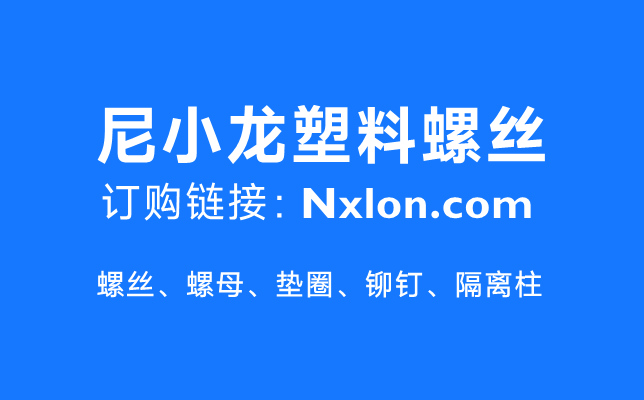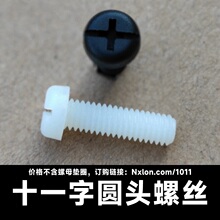Torx Pan Head Self-Extruding Screw
©Nxlon.com D/T:

The torx pan head self-extruding screw is a common mechanical connection fastener. The following is a detailed introduction to the torx pan head self-extruding screw:
Structural Features of the Torx Pan Head Self-Extruding Screw
Head Shape: Designed with a pan head, the head is cylindrical, having a large bearing surface and good compressive performance. This shape enables the screw to provide a large contact area when tightened, evenly transmitting pressure, and is suitable for connection scenarios that require a large clamping force.
Slot Design: It adopts a torx slot. Compared with the cross recessed slot, the torx slot can better cooperate with the screwdriver, transmit a greater torque, and reduce the occurrence of slipping. At the same time, the shape of the torx slot makes the strength of the screw head higher, and it is not easy for the slot to be damaged due to the twisting of the screwdriver, improving the service life and reliability of the screw.
Thread Structure: It belongs to a self-extruding screw. During the screwing-in process, its thread forms an internal thread by extruding the material of the connected component. This thread structure does not require pre-processing a complete internal thread in the connected component, simplifying the processing technology and reducing costs. The thread profile of the self-extruding screw is usually relatively sharp, which can better cut into the material and form a tight connection.
Materials and Processes of the Torx Pan Head Self-Extruding Screw
Material Selection: It is usually manufactured from high-quality metal materials, such as carbon steel, stainless steel, etc. The torx pan head self-extruding screw made of carbon steel has high strength and hardness, can meet the requirements of general mechanical connections, and is widely used in various industrial fields. The stainless steel material has excellent corrosion resistance and oxidation resistance, and is suitable for harsh working environments, such as in corrosive media like humidity, acid, and alkali. It is often used in fields such as food processing equipment, medical devices, and marine engineering.
Manufacturing Process: The manufacturing process includes key processes such as cold heading, thread rolling, and heat treatment. The cold heading process is used to form the head and shank of the screw. Through cold heading, the material utilization rate can be increased, the production cost can be reduced, and at the same time, the structure of the metal material can be made denser, improving the strength and toughness of the screw. The thread rolling process is used to process the thread, ensuring the dimensional accuracy and surface quality of the thread, and ensuring the fitting accuracy between the thread and the connected component. The heat treatment process further improves the hardness, strength, and wear resistance of the screw to meet the requirements of its mechanical properties in different application scenarios.
Specifications and Dimensions of the Torx Pan Head Self-Extruding Screw
Thread Specifications: Common thread specifications include M3, M4, M5, M6, M8, etc. Different thread specifications are suitable for different connection requirements. Smaller specification screws such as M3 and M4 are often used in fields such as electronic devices and small instruments; larger specification screws such as M6 and M8 are suitable for fields such as machinery manufacturing and construction that require higher connection strength.
Length Dimensions: The length of the screw is generally between 6mm and 60mm. The specific length can be selected according to the thickness of the connected component and the actual installation space. For example, for the connection of thinner plates, shorter screws such as 6mm and 8mm can be selected; while for connecting thicker components or when it is necessary to pass through multiple layers of materials, longer screws such as 30mm and 60mm need to be selected.
Application Fields of the Torx Pan Head Self-Extruding Screw
Electronic Equipment Manufacturing: In the production of electronic equipment, such as computers, mobile phones, tablets, etc., it is often used to fix components such as circuit boards, heat sinks, and casings. The pan head design of the torx pan head self-extruding screw can provide a large supporting area, ensuring the stability of the connection; the characteristics of the self-extruding screw can achieve rapid fastening without pre-processing the threaded hole, improving production efficiency.
Machinery Manufacturing: In the manufacturing and assembly of various mechanical equipment, it is widely used to connect mechanical parts, such as gears, shafts, flanges, etc. Its large bearing capacity and reliable connection performance can ensure that the connections between various components of the mechanical equipment are firm during operation and can withstand large loads and vibrations.
Automobile Industry: In the production of automobiles, it is used to connect the components of the automobile engine, chassis, body, etc. For example, the assembly of the engine cylinder block, the connection of the chassis components, and the fixation of the body interior parts. The high strength and good shock resistance of the torx pan head self-extruding screw can meet the reliability requirements of the connected components during the driving process of the automobile.
Furniture Manufacturing: During the assembly of furniture, it can be used to connect materials such as wood and artificial panels. For example, the assembly of tables and chairs, the connection of the frame of wardrobes, etc. The appearance of the pan head is relatively beautiful and can be used as a fastener for exposed connections. At the same time, the connection method of the self-extruding screw can provide sufficient connection strength to ensure the structural stability of the furniture.
Installation and Disassembly of the Torx Pan Head Self-Extruding Screw
Installation Method: First, drill a suitable bottom hole in the connected component according to the specification of the screw. The diameter of the bottom hole should be slightly smaller than the outer diameter of the screw to ensure that the screw can effectively extrude the material when it is screwed in. Then, use a torx screwdriver or an electric screwdriver to align the screw with the bottom hole, and rotate the screwdriver clockwise to gradually screw the screw into the connected component. During the screwing-in process, pay attention to controlling the torque to avoid the breakage of the screw or the damage of the connected component due to excessive torque. When the screw head is flush with the surface of the connected component, the installation is completed.
Disassembly Method: When disassembling, use a torx screwdriver or an electric screwdriver of the same specification as that used for installation, and rotate the screwdriver counterclockwise to unscrew the screw from the connected component. If the screw is rusted or stuck during use, you can first spray a rust remover around the screw, wait for a period of time to let the rust remover fully penetrate, and then try to disassemble it. During the disassembly process, if there is greater resistance, do not forcefully twist it to avoid damaging the screwdriver or the screw head. You can try to tap the screwdriver gently to loosen the screw and then disassemble it.
尼小龙塑料螺丝-塑料螺母-尼龙垫圈-塑料铆钉
绝缘塑料法兰螺母
订购链接:Nxlon.com/1034
尼龙法兰螺母的螺纹规格有:M3*0.5、M4*0.7、M5*0.8、M6*1.0、M8*1.25、M10*1.5、M12*1.75等白色尼龙螺母、黑色塑料螺母、透明塑料法兰螺母。
R3055-塑料铆钉-尼龙铆钉
订购链接:Nxlon.com/3055
R3055-塑料铆钉-尼龙铆钉塑料铆钉-尼龙铆钉-汽车塑胶铆钉-尼小龙尼龙铆钉R2.6R3.5R4R5塑胶柳钉子母铆钉快捷紧固件塑料卡扣。
绝缘透明塑料六角螺母
订购链接:Nxlon.com/1016
绝缘透明塑料六角螺母是一种采用聚碳酸酯(PC)材料制成的具有特定功能和特性的塑料螺母,尼小龙现有塑料螺母M3、M4、M5、M6、M8等公制规格。









